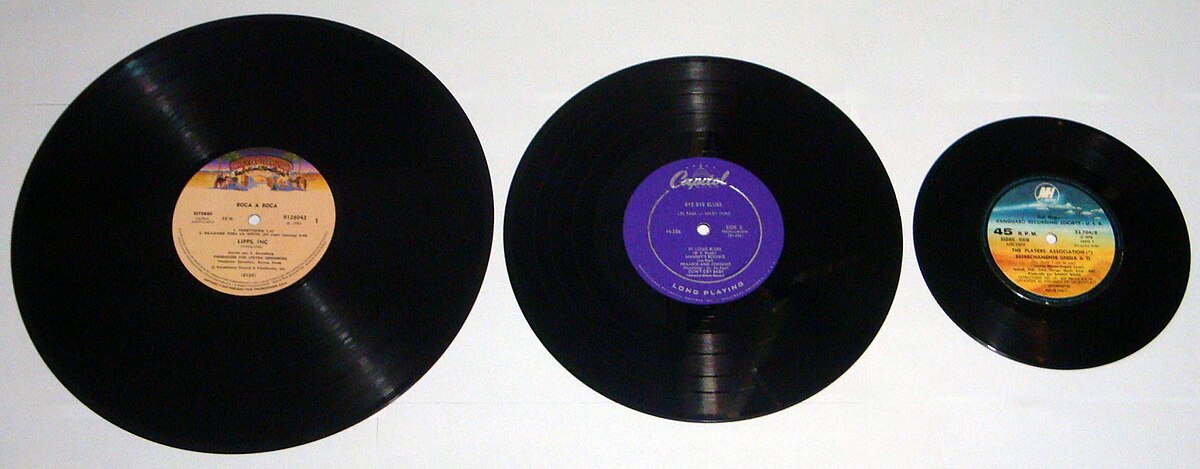Noen tenker jo også motsatt. Om damer altså, ikke nødvendigvis pickuper.
trenger en pickup å være pen?
- Trådstarter rama
- Startdato
Diskusjonstråd Se tråd i gallerivisning
-
Alt som kan være pent, bør vel være pent ?

Verdens vakreste Pickuper
Hva med en tråd som følger tonearmtråden? Vet det er mange smykker med diamant som passer i enden på en arm. Hvis ingen varsler høvdingen. Kan det hende vi kan se noen nakenbilder også. www.hifisentralen.no
min Ikeda 9TS sporer helt fint og justering med Feikert uproblematiskt.
www.hifisentralen.no
min Ikeda 9TS sporer helt fint og justering med Feikert uproblematiskt.
Liker min Lyrakanskje ikke den peneste som finnes men
mvh
Men en pen innpakning gjør ikke noeDet er vel med pickup som med damer.
Det indre er viktigst, beauty er added value
Men sporer hun bra?Men en pen innpakning gjør ikke noe
Vis vedlegget 803331Har mistet adressen …så hvis noen kunne hjelp meg med navnet også hadde det vært fintDen så veldig åpen og utsatt ut, hadde ikke turt å håndtere den med mine skjelvne fingreVDH Colibri er ikke akkurat noen skjønnhet, men lydkvaliteten er udiskutabel. Beste pickup jeg har hatt i hus.
/Ruby Min Clearaudio Veritas. Kjøpt på 80 tallet, samtidig med Respons høyttalerne. Synes den er elegant. Passer estetisk godt til platespilleren.
Min Clearaudio Veritas. Kjøpt på 80 tallet, samtidig med Respons høyttalerne. Synes den er elegant. Passer estetisk godt til platespilleren.
Fikk den spesialrenset for noen måneder siden hos Mala. Sporer utmerket, ingen tegn til slitasje på nål ifølge pickup doktoren. Låter sprekt og transparent i mine ører.
Den nydeligste pickuppen som har vært innom Toskens grotte
Denne er jo ganske vakker.... Om det er MM eller MC er ikke godt å si, men nåla bør vel holde et liv eller ti. Platene derimot, tjaa...Om denne er direkte vakker er jeg vel ikke så sikker på. Det jeg derimot ER sikker på, er at den kommer til å bli boende her i laaang tid, for lyden er bare helt fabelaktig!
Det skulle man tro, men i virkeligheten er det omvendt.Om det er MM eller MC er ikke godt å si, men nåla bør vel holde et liv eller ti. Platene derimot, tjaa...
Platene holder godt, stiftene derimot, skal byttes,
- etter hver plateside....
/Morten
Hehe.... ser ut som noe en kunne handla hos ByggmakkerDet skulle man tro, men i virkeligheten er det omvendt.
Platene holder godt, stiftene derimot, skal byttes,
- etter hver plateside....
Vis vedlegget 806366
/Morten
- Ble medlem
- 29.10.2016
- Innlegg
- 10.754
- Antall liker
- 28.755
- Sted
- Hjortshøj, Danmark.
- Torget vurderinger
- 2
Dette er faktisk feil.Denne er jo ganske vakker.... Om det er MM eller MC er ikke godt å si, men nåla bør vel holde et liv eller ti. Platene derimot, tjaa... Vis vedlegget 806329
Også litt feil, som Lagga skriver.
Disse holdt typisk til 5-7 platesider. Man kunn få nogle, som var spesielt coatet på spissen.
De blev lovet å holde opp til 10 avspillninger.
Innløpsrillen på en 78-plate er faktisk laget som et slipespor, som retter nålespissen til, for å gi
minimalt plateslit. Derfor var det viktikt å sette ned nålen så ytterst i sporet, som muligt.
Med nyere/riktige pickupper til 78-avspillning er det derimot viktigt å unngå innløpsrillen, for å
forlenge livet på nålen.
Slutt på dagens leksikon
Ja, det er også sant, men - helt feil.Hehe.... ser ut som noe en kunne handla hos Byggmakker

Det fantes/finnes fire forskjellige profiler på disse stiftene, som gjør at man kan "tune" lyden som man ønsker.
- Soft tone - Used to mute the sound for a softer, quieter tone. The manual players did not have volume control, and this makes it a simple thing to control the volume of the music. The soft tone will also help to mask the buzzing that can happen with a scratched record.
- Medium tone - Can be harder to find than either the soft or loud. They're exactly like they're described and create a sound that's in between the soft and the loud.
- Spearpoint - Almost looks like a fountain pen nib with the same thickness as the loud, these needles are used to emit a medium, clear sound.
- Loud tone - Using these antique phonograph needles allows you to hear a louder version of the music, and they work best on records made prior to 1920.
Jeg finner ikke tilbake til rådet om å skifte nål etter hver plateside, så da får vi heller lene oss på de ekspertene jeg fant i denne omgang, og si at en stift i hvert fall bør byttes etter hver PLATE.
/Morten- Ble medlem
- 27.03.2007
- Innlegg
- 21.603
- Antall liker
- 33.586
- Sted
- Nede i fjæresteinene
- Torget vurderinger
- 2
En pen pickup, om jeg skal si det selv:
Mvh- Ble medlem
- 29.10.2016
- Innlegg
- 10.754
- Antall liker
- 28.755
- Sted
- Hjortshøj, Danmark.
- Torget vurderinger
- 2
Ja, det er også sant, men - helt feil.
Det fantes/finnes fire forskjellige profiler på disse stiftene, som gjør at man kan "tune" lyden som man ønsker.
- Soft tone - Used to mute the sound for a softer, quieter tone. The manual players did not have volume control, and this makes it a simple thing to control the volume of the music. The soft tone will also help to mask the buzzing that can happen with a scratched record.
- Medium tone - Can be harder to find than either the soft or loud. They're exactly like they're described and create a sound that's in between the soft and the loud.
- Spearpoint - Almost looks like a fountain pen nib with the same thickness as the loud, these needles are used to emit a medium, clear sound.
- Loud tone - Using these antique phonograph needles allows you to hear a louder version of the music, and they work best on records made prior to 1920.
Jeg finner ikke tilbake til rådet om å skifte nål etter hver plateside, så da får vi heller lene oss på de ekspertene jeg fant i denne omgang, og si at en stift i hvert fall bør byttes etter hver PLATE.
/Morten
The Victor-Victrola Page
Needles
Victor needles were typically made of soft steel, and are often available in "LOUD", "MEDIUM" and "SOFT" tone configurations. The only differences between these types are in the thickness (diameter) of the needle shank. The thicker the needle, the more vibration is transferred from the record to the soundbox, and thus the greater the volume. Victor manufactured and marketed their own needles, as this was a very lucrative business. Steel needles were originally sold in packets, "tins", or cardboard boxes as seen at left.
Steel needles should be used only once (one side of one record) to avoid excessive wear of the record, so it is likely that any needles you have found rolling around inside your phonograph have already been used. They should be trashed. Used needles have no value whatsoever, so get rid of them! This would not be the case if the needles are still in a sealed packet; those can be used without issue. New steel needles are still readily available from a number of sources (see our RESOURCES page), and they are not expensive.
There were literally thousands of different brands of needles produced in the early years of the 20th Century, and some of them utilized unique "bent" or "twisted" designs. Some hardly look like needles at all. One could spend a lifetime collecting different needle types, and probably never come-across all the brands and designs that were manufactured. Colorful and ornate needle tins were also unique to eachmanufacturer, and many collectors prize these tins today.
Several non-steel needles were produced by Victor over the years. One was a "Fiber" type needle, which was simply a shaved piece of bamboo that could be re-sharpened and reused (right). Victor sold little "sharpening kits" so that customers could re-point them after every few plays. These bamboo needles tended to reduce record wear, but sound far more "muted" than do steel needles.
In 1924, Victor introduced the "Tungstone" multi-play needle, which (according to Victor's advertising) could last up to 200 plays. This was mostly advertising hype...in most cases 50 to 60 plays per needle was all that could be achieved. These products consisted of a brass or steel shank with a small "point" protruding from one end. This point is made of a tungsten alloy, which is much softer than the grooves of records. Tungstone needles are no longer manufactured, but they still show-up at auctions and on Ebay in their original small tin containers or cardboard "punch-out" packs (left). A Tungstone needle may be used to play stacks of records until it ceases working (at which time it is worn out and will no longer be visible as a small protrusion from the shank). If you find a Tungstone needle, rub your finger along the smaller end, and you should be able to feel a small point protruding from the shank. It doesn't protrude very much! If it is totally smooth, then the tungsten element has already been worn away, and the needle must be tossed-out.
For Victrola machines, needles should be stored in the little "cups" along the side of the motorboard (picture on right). Loud needles go in one cup, soft needles in the other and the center cup is where the used needles should be placed. When the center cup fills-up with used needles, you dump them in the trashcan. The metal (gold or nickel-plated) needle disposal cup (center position) is often still found in many Victrolas. It is humorous to note that many EBay sellers seem to take great pride in the fact that their phonograph has 5 needles still sitting in the cup, and that this somehow adds "value" to the machine. First, they cost about 2 cents each, and second, they have probably already been used 20 times, and belong in the trash can.
The "slots" in the back of the needle cups (on later-vintage machines) were used to hold the Tungstone needle tins.
External-horn Victors do not have needle cups.
IMPORTANT: Never used diamond or sapphire-tipped needles on early acoustic or electric phonographs. These needles were intended for use only on post-1940 machines which had a much lighter tonearm. Using a gem-tipped needle on an early Victor or Victrola is a sure-fire way to destroy your records very quickly!
The beginning of early records would have a few rotations of silent groove to grind the needle to fit the groove. The filler in 78's is what gives them "surface noise". It was a grinding agent for the needle.Sist redigert:- Ble medlem
- 29.10.2016
- Innlegg
- 10.754
- Antall liker
- 28.755
- Sted
- Hjortshøj, Danmark.
- Torget vurderinger
- 2
Åh ja..... hadde man bare råd til denSoundsmith Hyperion, en av de triveligste pickupene som har hospitert her.
Vis vedlegget 806681
Vis vedlegget 806682
Nålefane av kaktus...
Vis vedlegget 806683
/Morten
https://www.topsoundhifi.dk/shop/8-pickupper/716-soundsmith--hyperion/
Koetsu Coralstone er flott.
Og det finnes flere :
Oppfinneren av den flate plata. Startet også (blant andre) et plateselskap som het Deutsche Grammophon Gesellschaft. I dag heter det bare Deutsche Grammophon.

Emile Berliner - Wikipedia
 en.wikipedia.org
en.wikipedia.org
Stift og RIAA i samme stykke altså. PraktiskJa, det er også sant, men - helt feil.
Det fantes/finnes fire forskjellige profiler på disse stiftene, som gjør at man kan "tune" lyden som man ønsker.
- Soft tone - Used to mute the sound for a softer, quieter tone. The manual players did not have volume control, and this makes it a simple thing to control the volume of the music. The soft tone will also help to mask the buzzing that can happen with a scratched record.
- Medium tone - Can be harder to find than either the soft or loud. They're exactly like they're described and create a sound that's in between the soft and the loud.
- Spearpoint - Almost looks like a fountain pen nib with the same thickness as the loud, these needles are used to emit a medium, clear sound.
- Loud tone - Using these antique phonograph needles allows you to hear a louder version of the music, and they work best on records made prior to 1920.
Jeg finner ikke tilbake til rådet om å skifte nål etter hver plateside, så da får vi heller lene oss på de ekspertene jeg fant i denne omgang, og si at en stift i hvert fall bør byttes etter hver PLATE.
/Morten
- Ble medlem
- 29.10.2016
- Innlegg
- 10.754
- Antall liker
- 28.755
- Sted
- Hjortshøj, Danmark.
- Torget vurderinger
- 2
Feil igjenStift og RIAA i samme stykke altså. Praktisk

RIAA (Recording Industry Association of America) blev dannet i 1952 (året før jeg blev til)
78´ere fra 20-30-40 tallet har ingen EQ i produksjonsprosessen. Derfor inget behov for riaa, som kom langt senere.
Da man begynnte å lage 33 rpm plater, blev det vanskeligt med å leve opp til "Long Play"-logoet.
Derfor riaa for å minimere rillenes utsving (bas).Highphonic MC-D15
De kunne det i gamledager også
Feil igjen
RIAA (Recording Industry Association of America) ble dannet i 1952 (året før jeg ble til)
78´ere fra 20-30-40 tallet har ingen EQ i produksjonsprosessen. Derfor inget behov for riaa, som kom langt senere.
Da man begynnte å lage 33 rpm plater, ble det vanskelig med å leve opp til "Long Play"-logoet.
Derfor riaa for å minimere rillenes utsving (bas).
[/SITAT]
Kan det stemme?
Utklipp av bruksanvisninga:
Tilgjengelige EQ-innstillinger dekker praktisk talt alle kjente kuttekurver som brukes, inkludert de fleste 78RPM.- Ble medlem
- 29.10.2016
- Innlegg
- 10.754
- Antall liker
- 28.755
- Sted
- Hjortshøj, Danmark.
- Torget vurderinger
- 2
Vil hellere svare igjen med et spørgsmål......
Hvilken riaa/eq-kurve ville du bruke på denne
His master's voice?Vil hellere svare igjen med et spørgsmål......
Hvilken riaa/eq-kurve ville du bruke på denne
Vis vedlegget 806879
- Ble medlem
- 29.10.2016
- Innlegg
- 10.754
- Antall liker
- 28.755
- Sted
- Hjortshøj, Danmark.
- Torget vurderinger
- 2
Nope..... VictrolaHis master's voice?Denne lenken går direkte til EQ-historien. And it's a bloody mess, helt fram til 1980-tallet:

Phonograph record - Wikipedia
 en.wikipedia.org
en.wikipedia.org
-
Laster inn…
Diskusjonstråd Se tråd i gallerivisning
-
-
Laster inn…




